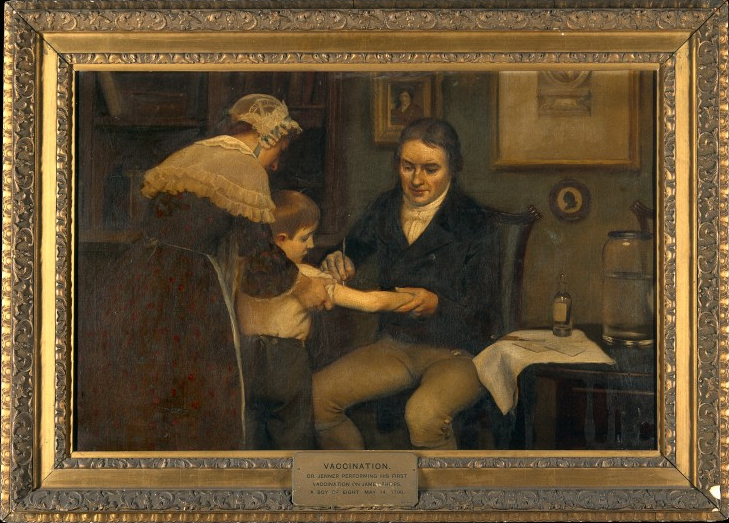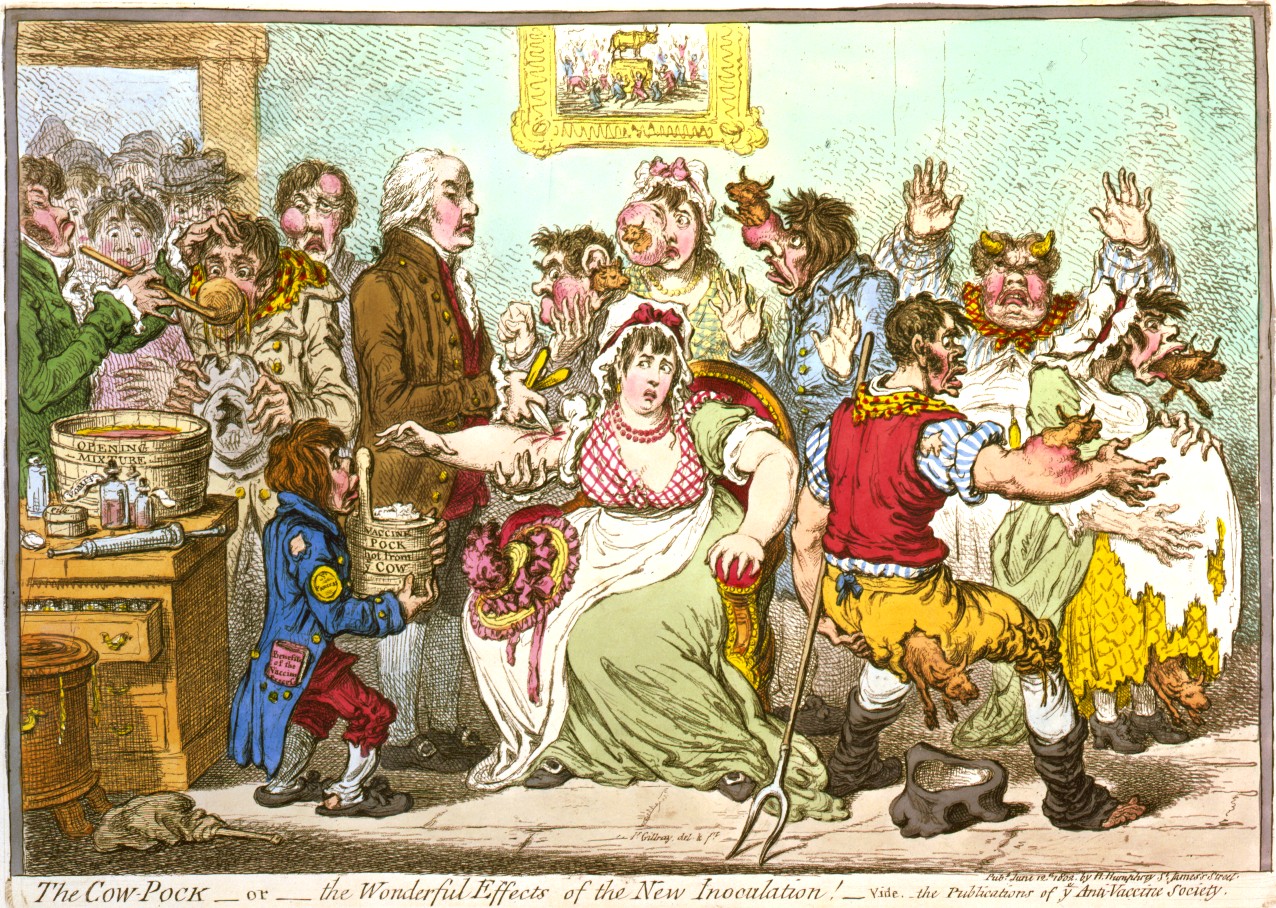
Edward Jenner vaccinates James Phipps (1796)
Middle
Eastern physicians and others had sought to prevent smallpox
by variolation, whereby material from patients with
smallpox was transferred to healthy people. This typically
prevented smallpox, but sometimes brought on the disease
itself, and (or) lead to the patients being shunned as
"carriers". Use of a live vaccine was introduced in Europe
by Lady Mary
Wortley Montagu, who had her own son vaccinated
in 1717.
By the late 18th century, English physicians were aware that people who had been exposed to bovine cowpox seldom developed smallpox. Edward Jenner scraped some material from cowpox blisters on milkmaid Sarah Holmes (who got it from a cow named Blossom), and scratched the material into the skin of healthy 8-yr-old James Phipps with a lancet (vaccination, or inoculation). The boy developed a mild fever, but recovered quickly. On subsequent exposure to cowpox and smallpox, Phipps did not develop either disease. Persons subsequently inoculated from Phipps also did not develop either disease.
As in later years, vaccination was not immediately accepted (see below), but rapidly became a fad. In consequence of his notoriety, Jenner was later appointed physician to King George.

By the late 18th century, English physicians were aware that people who had been exposed to bovine cowpox seldom developed smallpox. Edward Jenner scraped some material from cowpox blisters on milkmaid Sarah Holmes (who got it from a cow named Blossom), and scratched the material into the skin of healthy 8-yr-old James Phipps with a lancet (vaccination, or inoculation). The boy developed a mild fever, but recovered quickly. On subsequent exposure to cowpox and smallpox, Phipps did not develop either disease. Persons subsequently inoculated from Phipps also did not develop either disease.
As in later years, vaccination was not immediately accepted (see below), but rapidly became a fad. In consequence of his notoriety, Jenner was later appointed physician to King George.
